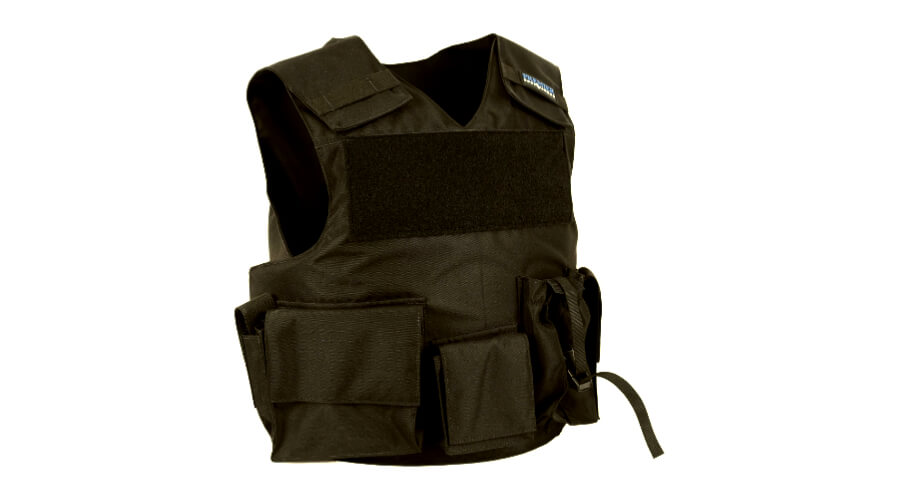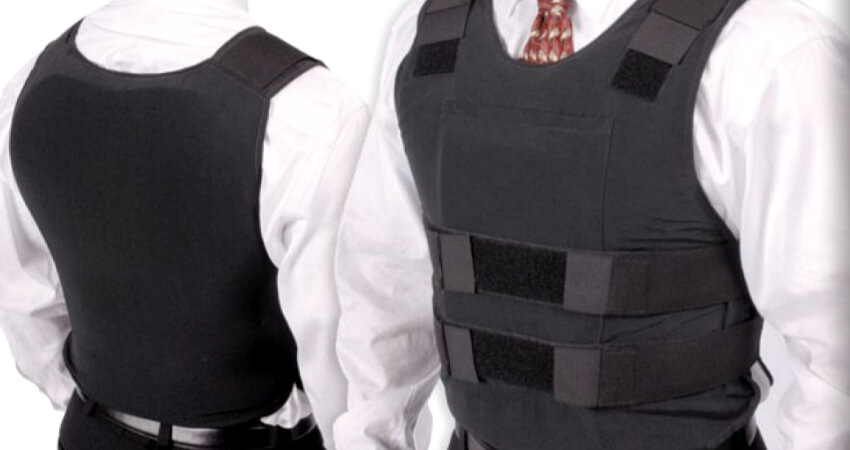All materials are bulletproof as long as you lay them on thick enough. However, no material will be bulletproof if you have a huge bullet. The materials used in making bulletproof vests are mainly bound by what they carry and the modern weaponry you may find in the fields. Therefore, the materials can be categorized into high density, high-tensile, and composite ceramics.
Are All Dense Materials Bulletproof?
Not all dense materials are ideal for body armor. Some materials can be pretty tough when thick but easily pierced or fractured. Fortunately, some materials are flexible and have rigid molecular structures to allow the best anti-ballistic capabilities.
Material Used In Making Vests Bulletproof?

Bulletproof vests are not just bulletproof vests. Ballistic body armor is produced in various parts of the world, and different materials create the ballistic properties on the vests. The typical materials used to make bulletproof vests include Aramid, UHMWPE, Dyneema, Kevlar, etc.
The materials used in making bulletproof vests determine the vests’ flexibility, thickness, weight, and the kinds of shots that the vest can resist. Hence searching for the best bulletproof vest can be a challenge if you don’t know which material to use.
Nonetheless, every bulletproof vest has one common thing: being able to stop all types of cartridges, including those made by American NIJ (National Institute of Justice), German Standard, and British Standard. These three standards represent soft body armor.
Before discussing different materials used in making bulletproof vests, you should understand the differences between the two primary body armor materials, UHMWPE and Dyneema from DSM.
UHMWPE
UHMWPE is a common material used in the manufacture of bulletproof vests. The material is ultra-high molecular weight polyethylene, a chemical polymerization process where monomers get converted to polymers.
The material is solid but lightweight. It is highly resistant to ballistic and sharp objects. UHMWPE can be used in bulletproof, stab vests, and other clothes, including fishing lines, gloves, gym equipment, etc.
Features Of UHMWPE
1. Highly wear-resistant
2. Lightweight and very strong
3. UV light exposure doesn’t make it lose its strength,
4. Performs well against liquid chemicals
5. It never loses its ballistic properties and doesn’t have internal friction.
Some manufacturers who make UHMWPE include Endumax, Dyneema, Gold Shield, and Gold Flex. Other small brands also manufacture this material, so it’s highly available.
Dyneema From DSM

Dyneema is a popular material used in making bulletproof vests. It is 15 times stronger than steel and compared to aramid fibers. It’s 40% stronger, taking into account its weight versus strength.
Dyneema Materials To Choose From
1. Multi vests are made using Dyneema Force Multiplier Technology, including bullet- and stab-proof vests.
2. Dyneema HB50, HB2, HB210, HB26, HB80, HB56, and HB212 help make ballistic plates, helmets, and shields.
3. SB117, SB115, SB21, SB28, SB31, SB71, SB34, and SB51 feature prominently in making body armor.
As mentioned above, there are different materials used to make bulletproof vests; therefore, buying a Dyneema vest is not the same as you can select from the materials named above. This means that the flexibility, weight, and thickness will not be the same depending on the fabric.
Some manufacturers will combine Dyneema and aramid fibers for maximum ballistic protection. The moisture of Dyneema with aramids produces flexible and lightweight vests.
Aramid Fibers
Aramid has been on the market since the 1960s. This synthetic fiber is famous, and Dupont Kevlar and Twaron from Teijin use it to make vests.
The material makes bulletproof and stab vests because of its strength and flexibility. The material is also stable and safe even after continuous use.
Properties Of Aramid
1. Very strong
2. Resistant ant to chemicals
3. Does not conduct heat
4. Has no melting point
5. Works perfectly against a hot and cutting element
6. UV light and acid-sensitive
Types Of Aramids
1. Unidirectional (UD)
2. Woven
Since Unidirectional aramid has 2-4 layers of fibers, it is more rigid than woven aramid. The material is also strong and lightweight.
A woven aramid consists of aramids that weave together using traditional methods. The weaving type on the material will affect its strength and overall weight. A woven aramid is relatively flexible and can stop a contact shot from a 0-meter distance.
Kevlar thread from Dupont makes the UD and Woven aramid. Teijin makes Twaron aramid and Pro-Systems S.p.A makes Artec.
When comparing the flexibility of woven aramid and UD aramid, the former is superior. It can bend in multiple directions, but UD is more rigid.
Kevlar
Kevlar by Dupont is a well-known body armor material developed in 1965. This artificial hydrocarbon fiber has a combination of features that make it suitable to manufacture bulletproof vests.
Properties Of Kevlar
1. Very strong
2. Lightweight
3. Chemical and cut resistant
4. Flame resistant
5. It doesn’t melt when heated
6. It doesn’t soften or flow when heated
7. Does not get affected by water immersion
Spectra Shield
Spectra Shield by Honeywell has helped protect military and police officers for about 20 years.
Properties Of Spectra Shield
1. Highly strong
2. Provides a high level of performance in all body armor materials
3. Flexible
4. Reduces the effects of blunt trauma
Gold Flex And Gold Shield
Gold Flex and Gold Shield by Honeywell are synthetic fibers used to manufacture bulletproof vests. Aramid fibers are used to manufacture Gold Shield, and it is made in three types: Gold Shield LCR, GoldFlex, and Gold Shield PCR.
Gold Shield LCR and GoldFlex are popular in making concealable bulletproof vests, while Gold Shield PCR helps manufacture rigid armor, for instance, ballistic panels or helmets.
Conclusion
Multiple global manufacturers develop and refine materials for making body armor. These manufacturers work hard to create lightweight and durable materials that provide the best protection for bulletproof vest wearers. The difference in weight significantly impacts how comfortable the wearer will be when using the vest.
Therefore, these materials are meant to be light so that cops can carry some more water, snacks, or extra ammunition. The materials used to make bulletproof vests may break down over time for various reasons. Thus, it’s essential to take good care of the vest to keep it functional until its lifespan expires.

